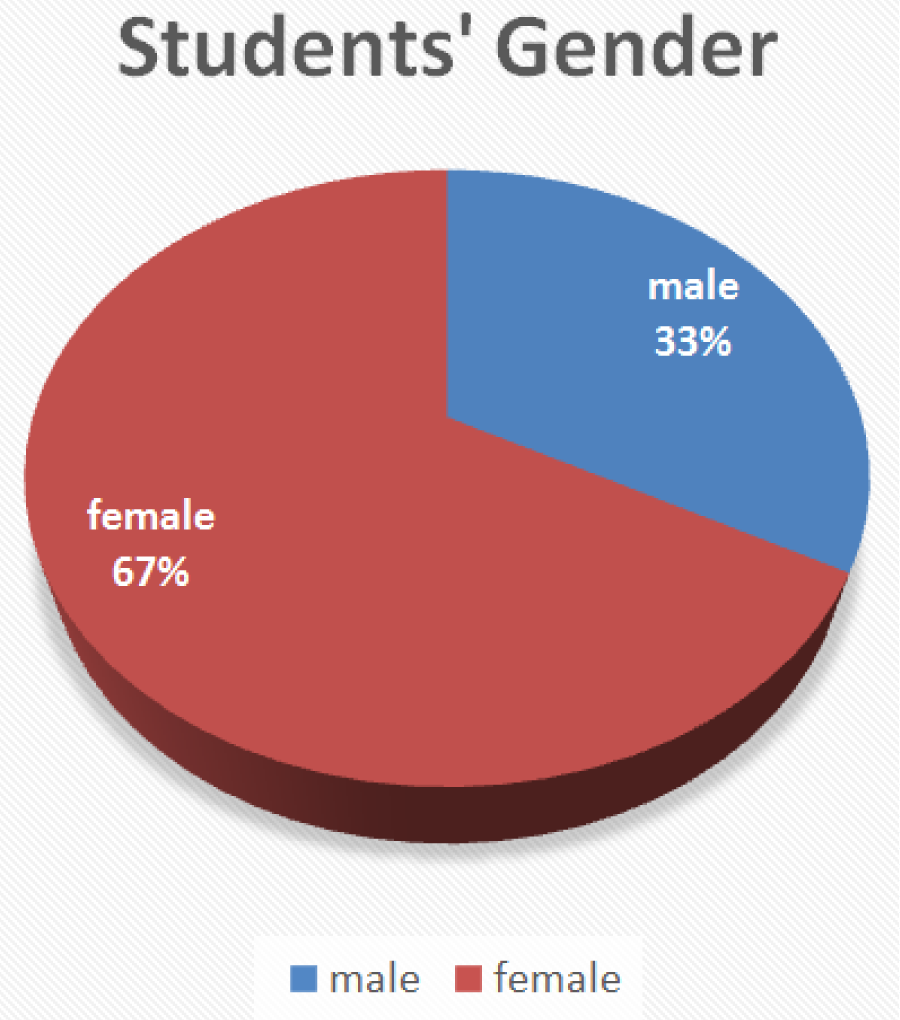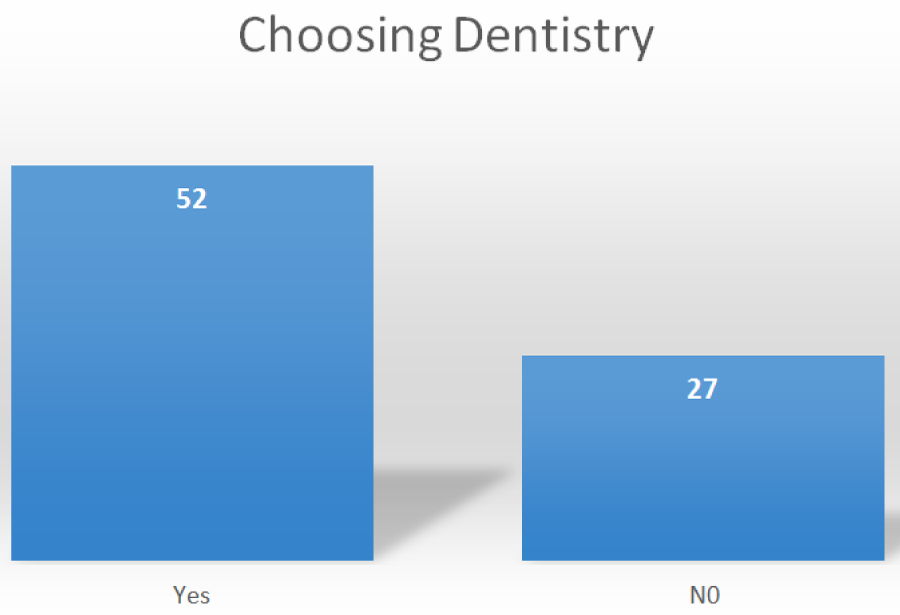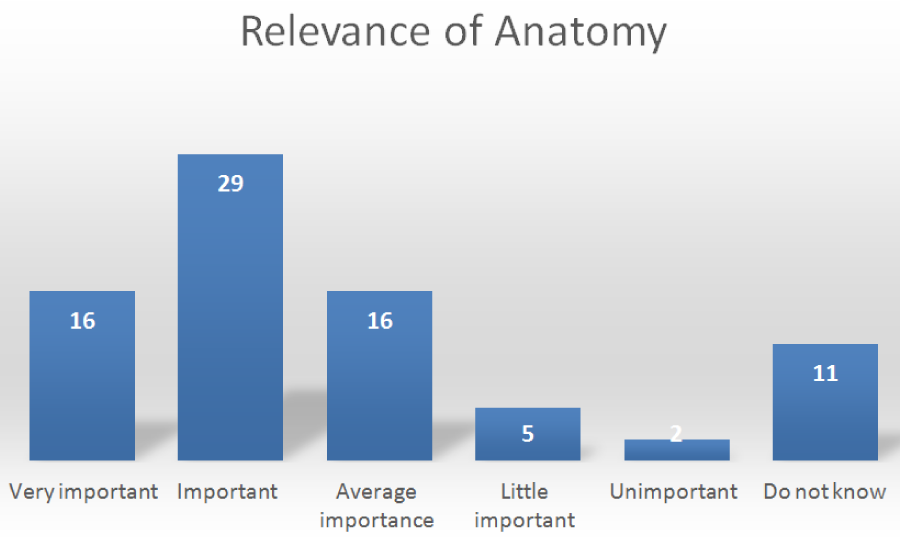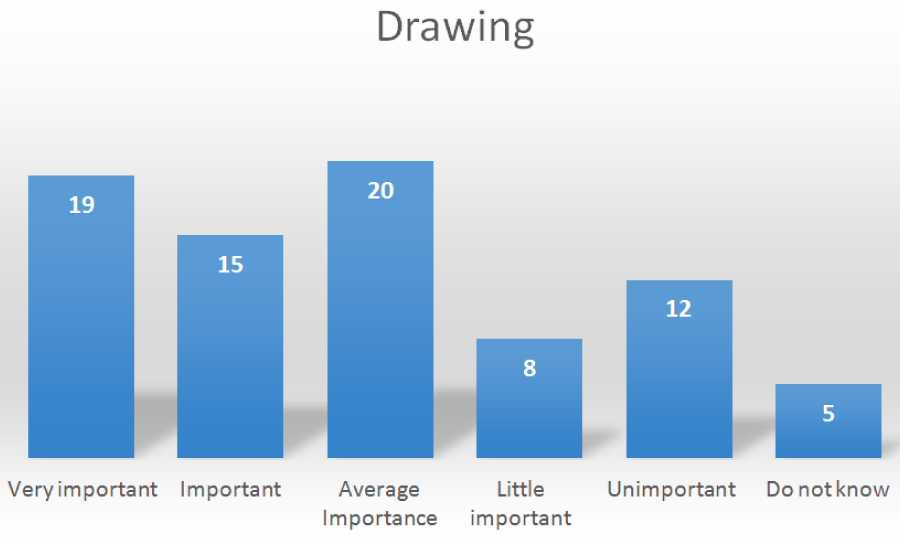Research Article
Drawings as learning aid for the human anatomy students’ based evaluation

Faaiz Y Alhamdani1 and Hatem A Hatem2
1Assistent Professor, Head of Oral and Maxillofacial Surgery, College of Dentistry, IBN Sina University for Medical and Pharmaceutical Sciences, Baghdad-Iraq
2Lecturer, Head of Anatomy Department, College of Dentistry, IBN Sina University for Medical and Pharmaceutical Sciences, Baghdad-Iraq
*Address for Correspondence: Faaiz Y Alhamdani, Assistent Professor, Head of Oral and Maxillofacial Surgery, College of Dentistry, IBN Sina University for Medical and Pharmaceutical Sciences, Baghdad-Iraq, Tel: 009647706047791; Email: [email protected]
Dates: Submitted: 03 July 2017; Approved: 03 October 2017; Published: 05 October 2017
How to cite this article: Alhamdani FY, Hatem HA. Drawings as learning aid for the human anatomy students’ based evaluation. J Oral Health Craniofac Sci. 2017; 2: 090-095. DOI: 10.29328/journal.johcs.1001017
Copyright License: 2017 Alhamdani FY, et al. This is an open access article distributed under the Creative Commons Attribution License, which permits unrestricted use, distribution, and reproduction in any medium, provided the original work is properly cited.
Keywords: Human anatomy; Drawings; Dental students; Clinical surgical skills
Abstract
Introduction: One of the essential requirements for efficient oral and maxillofacial surgeon is comprehensive knowledge in anatomy of head and neck regions. Authors believe that asking students to draw anatomical sketches will assist them to improve their imaginary memory for human anatomy. However, drawing, as learning aid in anatomy, has not been given enough attention as a learning aid for human anatomy.
Aim of the study: To determine dental students’ level of appreciation to drawings as practical learning aid in human anatomy.
Materials and methods: Seventy nine first year dental students in Ibn Sina University for Medical and Pharmaceutical Sciences College of Dentistry for the academic year 2016-2017, were requested to complete a questionnaire. The questions were mostly related to the importance of drawing in anatomy and its relation to Anatomy education. The participation in the questionnaire was optional.
Results: This study showed highly significant relationship between the ability to understand anatomy subject and the importance of drawing (P=0.006). It also showed highly significant relationship between the importance of drawings and giving clinical examples during lectures or anatomical labs (P=0.006). Furthermore, the results showed no significant relationship between the importance of drawings and the load of anatomical material, introduced in anatomical lectures and labs (P=0.639).
Conclusion: Anatomical drawings, from first year dental students’ perspective, are a useful learning tool and can relate to different aspects of proper education of human anatomy. Drawings can be implemented as practical tool in human anatomy curriculum for undergraduate dental education.
Introduction
Basic knowledge of head and neck region anatomy is one of requirements for undergraduate dental education [1]. In addition, one of the essential requirements for efficient oral and maxillofacial surgeon is comprehensive knowledge in anatomy of head and neck regions [2].
Human anatomy is given as part of the first two years curriculum for medical and dental schools in Iraq. Study of Human anatomy has two elements, theoretical element, which depends on text books, articles and lectures. The second element is the practical element, which depend on figures, Millikan and cadavers to illustrate the different parts of human body in visual way. Illustrations of human body are usually provided in different ways. All these practical elements aim to enable dental students to comprehend human anatomy in a simple way. Recently, digital models are being used [3].
Drawing, on the other hand, has not been given enough attention as a learning aid for human anatomy beside other practical learning aids. Authors believe that asking students to draw anatomical sketches will assist them to improve their imaginary memory for human anatomy. To the best of the authors’ knowledge no previous attempts to consider students’ view toward this learning tool in human anatomy study.
Aim of the study
This study tries to determine dental students’ level of appreciation to drawings as practical learning aid in human anatomy for the hope of implementing it in Iraqi dental schools.
Materials and Methods
This cross sectional study included 79 first year dental students in Ibn Sina University for Medical and Pharmaceutical Sciences College of Dentistry for the academic year 2016-2017. The Ethical Approval for his study was obtained from the Scientific Committee in Ibn Sina University for Medical and Pharmaceutical Sciences University, College of Dentistry 7/23-3-2017. Maxillofacial Surgery and Anatomy Departments requested from first year students to complete a questionnaire, which contain 12 questions. The questions were mostly related to the importance of drawing in anatomy and its relation to various aspects of Anatomy education. The participation in the questionnaire was optional.
Before questionnaire administration, students were asked to draw what they have learned from Human Anatomy lectures and laboratory sessions for one module. The following Human Anatomy semester exam included assessment of students’ drawings as part of their general evaluation of their knowledge for this particular module. The assessment considered the student’s ability to draw a clear outline for the area under examination and localize certain anatomical structures within this area. Statistical analysis was conducted using SPSS version 20. Descriptive statistics and correlation analysis was performed with Spearman and Chi Square tests for ordinal and nominal variables.
Results
All the included students were at same age (19 years old). 53 of the students were females and 26 were males (Figure 1).
For 65.8 % of those students, the study of dentistry was their first choice, while for 34.2 % of the students; study of dentistry was not their first choice (Figure 2). No significant relationship between the choice of studying dentistry and having a family member with medical profession (p=0.831). Chi Square test also showed no significant relationship between understanding anatomy and having a member in the family with medical profession (p=0.521).
Most of the students (77.3 %) were aware about the significance of studying human anatomy in their curriculum on variable levels, as shown in figure 3 (very important, important and average importance). Only 13.9 % did not know the significance of studying human anatomy in relation to their profession. Figure 4 shows that 68.4 % of students think that using the drawing as a tool in studying human anatomy is important on different degrees (very important, important, average importance). Only 15.2 % think that it’s not important.
Figure 3: Number of students according to their awareness to the importance of studying human anatomy.
The study found no significant correlation between gender and the ability to understand the subject. It also showed no significant relationship between gender and the importance of drawings in the subjects of human anatomy in the given lectures (p=0.32, p=0.17 respectively). The study also did not show significant correlation between the choice of dentistry as a profession and the ability to understand human anatomy subject (P=0.67).
This study showed highly significant relationship between the ability to understand anatomy subject and the importance of drawing (P=0.006). It also showed highly significant relationship between the importance of drawings and giving clinical examples during lectures or anatomical labs (P=0.006). Furthermore, the results showed no significant relationship between the importance of drawings and the load of anatomical material, introduced in anatomical lectures and labs (P=0.639). However, the results showed no significant correlation between the relevance of human anatomy as an important subjects in curriculum of dentistry and the importance of drawings as a learning tool for this subject (P=0.80).
Discussion
It is important for basic science knowledge to be transformed into clinical skills in education continuum [4-6]. A clear example of this continuum is knowledge of anatomy and effective clinical knowledge [1]. Oral and maxillofacial surgical skills have the first priority in this aspect. It is crucial for each surgeon to be able to imagine each anatomical structure in the surgical field before and during performing surgery. Head and neck surgery has a particular importance in this respect, as head and neck region is rich in closely related vital anatomical structures.
Improvement of students’ ability to imagine the anatomical structures in head and neck region necessitates updating undergraduate anatomy education in dental schools using more practical educational tools. Recently, there have been different attempts to improve undergraduate dental curriculum [7-10]. However, most of these studies were clinically oriented [11-14]. Some of these studies considered students’ feedback toward different aspects of their learning experiences. It has been acknowledged that students’ opinion toward their learning environment is an important part in dental curriculum development [13-16].
This article represents part of educational research project on dental curriculum from students’ perspective on oral and maxillofacial surgery conducted by the first author [17,18]. This might be the first article trying to study first year dental students’ evaluation toward human anatomy education in Iraq. First year dental students, as the study showed, seem to have the awareness for the importance of human anatomy subject in their study and professional development.
They also acknowledged the importance of human anatomy drawings as learning aid, for better understanding of the subject. Drawing as a learning aid in science has been recognized early in the 20th century [19]. Furthermore, drawing as an educational tool has its important implications, as dental profession has an important artistic side. Drawings and carvings are essential practical parts in basic dental anatomy education [20].
Al-Johany et al. planned to evaluate the well manual skills of beginning dental students which could be used as a technique of assessment of students for the dental degree admission process. The results displayed an important correlation between drawing skills and professional dental skills of the student [21]. Hence it would be more relevant for dental students to embrace human anatomy drawings as a learning tool. Drawings do not only improve dental artistic skills, but it also improves their theoretical and surgical technical skills as they combine both the use of imagination and manual skills [22].
The significant relation between using anatomical drawing and understanding of anatomy agrees with the authors’ notion that implementation of drawings is a useful learning tool. This tool does not seem to add a workload on students, as the study result showed no significant relation between performance of drawing during anatomy laboratory session and the overall human anatomy subject requirement.
Absence of significant relationship between the importance of drawing and the importance of anatomy as perceived by students might be explained by the fact that dental students in the first year might not have a full appreciation of anatomy in its full scale. First year students are given anatomical information in its most basic level. First year anatomy curriculum includes basic osteology of head and neck complemented with the basic muscular structures scaffolding the neck region. The reason for this policy is to enable the student to overcome the overwhelming number of medical terms, which might make the study of anatomy as boring subject for junior students [5], especially when it is not given in their mother spoken language. Furthermore, junior students do not have full awareness of the relation between anatomy and surgery [5].
This study is intended to be the first within a research project tries to determine the effect of the use of anatomical drawing as a learning tool on theoretical and technical surgical skills of students during their 4th and 5th years of study. This study, however, has its limitations. Firstly, it included dental students in one dental school. It is the first time for drawings to be used as learning aid in human anatomy in dental curriculum in Iraq. This needs to be implemented and tested on other Iraqi dental schools. Secondly, not all students have the same drawing ability, which might have negative influence on them. It is unfortunate that students’ drawings were discarded at the end of each exam. However, it is hoped that application of this learning aid would help students to improve their drawing skill, as it is useful for their future dental career.
Conclusion
Anatomical drawings, from first year dental students’ perspective, are a useful learning tool and can relate to different aspects of proper education of human anatomy. Drawings can be implemented as practical tool in human anatomy curriculum for undergraduate dental education.
Acknowledgement
The authors would like to thank the participants’ students for sharing their views in this research.
References
- Rafai N, Lemos M, Kennes LN, Hawari A, Gerhardt-Szép S, et al. Anatomy meets dentistry! Linking anatomy and clinical practice in the preclinical dental curriculum. BMC Med Educ. 2016; 16: 305. Ref.: https://goo.gl/gS1dgQ
- Wexler A, Ed M. Anatomy of the Head and Neck. Ferraro’s Fundamentals of Maxillofacial Surgery. 2015.
- Papa V, Vaccarezza M. Teaching Anatomy in the XXI Century: New Aspects and Pitfalls. The Scientifc World Journal. 2013; 1-5. Ref.: https://goo.gl/2pL4B5
- Hendricson WD, Cohen PA. Future Directions in Dental School Curriculum, Teaching, and Learning. 75th Anniversary Summit Conference. ADEA, American Association of Dental Schools. 1998. Ref.: https://goo.gl/7mj4aS
- Bergman EM, Bruin AB, Herrler A, Verheijen IW, Scherpbier AJ, et al. Students’ perceptions of anatomy across the undergraduate problem-based learning medical curriculum: a phenomenographical study. BMC Med Educ. 2013; 13: 152. Ref.: https://goo.gl/YPTM5F
- Kin K, Shanker M, Manon V, Young J, Fakhouri WD. "Are Dental Students Ready for Nextgeneration Healthcare?" J Dent & Oral Disord. 2016; 2; 1020. Ref.: https://goo.gl/rox7VE
- Iacopino AM. The Influence of “New Science” on Dental Education: Current Concepts, Trends, and Models for the Future." Journal of Dental Education. 2007; 7: 450-462. Ref.: https://goo.gl/R7znWv
- Dennis MJ. Integration of medicine and basic science in dentistry: the role of oral and maxillofacial surgery in the pre-doctoral dental curriculum. Eur J Dent Educ. 2010; 14: 124-128. Ref.: https://goo.gl/A4TQHw
- Evans J, Henderson A, ohnson N. "The future of education and training in dental technology: designing a dental curriculum that facilitates teamwork across the oral health professions. Br Dent J. 2010; 208: 227-230. Ref.: https://goo.gl/8KsYRr
- Dennis MJ, Bennett JD, DeLuke DM, Evans EW, Hudson JW, et al. Improving the Medical Curriculum in Predoctoral Dental Education: Recommendations from the American Association of Oral and Maxillofacial Surgeons Committee on Predoctoral Education and Training. J Oral Maxillofac Surg. 2017; 75: 240-244. Ref.: https://goo.gl/fgna6d
- Anderson VR, Rich AM, Seymour GJ. Undergraduate dental education in New Zealand: 2007-2009 final-year student feedback on clinical learning environments. N Z Dent J. 2011; 107: 85-90. Ref.: https://goo.gl/pthfv5
- Fugill M. Teaching and learning in dental student clinical practice. Eur J Dent Educ. 2005; 9: 131-136. Ref.: https://goo.gl/shRRxs
- Cho GC, Chee WW, Tan DT. "Dental students' ability to evaluate themselves in fixed prosthodontics. J Dent Educ. 2010; 74: 1237-1242. Ref.: https://goo.gl/YA75o9
- Berg-Cloete SE, Snyman L, White JG. Dental students’ perceptions of practice management and their career aspirations. Afr J Health Professions Educ. 2015; 7: 194-198. Ref.: https://goo.gl/LSUCr3
- Curtis DA, Lind SL, Dellinges M, Setia G, Finzen FC. Dental students' self-assessment of preclinical examinations. J Dent Educ. 2008; 72: 265-277. Ref.: https://goo.gl/DXXTcB
- Mould MR, Bray KK, Gadbury-Amyot CC. Student self-assessment in dental hygiene education: a cornerstone of critical thinking and problem-solving. J Dent Educ. 2011; 75: 1061-1072. Ref.: https://goo.gl/NrBcNw
- Alhamdani F. Students Performance in Oral Surgery Clinic, in AlMustansiriyah University, Iraq- Student- and Patient-Based Assessment." Journal of Oral and Dental Research. 2014; 1: 4-9. Ref.: https://goo.gl/KQ6w24
- Alhamdani F. Students' Views of Their Congnitive Clinical Skills. Iraqi Association for Oral Research. 2017; 4: 12-24. Ref.: https://goo.gl/yQZj3p
- Silano AA. The drawing as a learning aid in science. Science Education. 1950; 34: 51-55. Ref.: https://goo.gl/QDa8AQ
- Siéssere S, Vitti M, Gustavo L, Semprini M, Cecílio S, et al. Educational Material of Dental Anatomy Applied to Study the Morphology of Permanent Teeth. Braz Dent J. 2004; 15: 238-242. Ref.: https://goo.gl/Gxqpae
- Al-Johany S, AlShaafi M, Bin-Shuwaish M, Alshahrani F, Alazmah A, et al. Correlation between Handwriting, Drawing Skills and Dental Skills of Junior Dental Students. The Journal of Contemporary Dental Practice. 2011. 12: 327-332. Ref.: https://goo.gl/msnVPx
- Guttmann GD, Ma TP, MacPherson BR. Making Gross Anatomy Relevant to Dental Students. Journal of Dental Education. 2003; 67: 355-358. Ref.: https://goo.gl/7sKsdt



